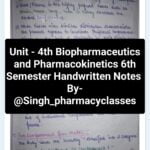Classification various approaches
1
www.DuloMix.com
DRUG DELIVERY SYSTEM :-
Drug delivery System will deliver
the drug at a rate determined by the needs of the
body over a specified period of time.
CONTROLLED RELEASE SYSTEM :-
Control release is helpful for
maintaining constant drug levels in the target tissues
or cells.
2
www.DuloMix.com
TYPES OF CONTROLLED DRUG RELEASE
SYSTEMS:-
1) Dissolution controlled systems
a) Encapsulation dissolution controlled system.
b) Matrix dissolution controlled systems.
2)Diffusion controlled systems
a) Reservoir controlled systems.
b) Matrix controlled systems.
3)Dissolution and diffusion controlled release
systems
3
www.DuloMix.com
4)Water penetration controlled systems
a) Swelling controlled systems
b) Osmotically controlled systems.
5) Chemically controlled release systems
a) erodible systems
b) drug covalently linked with polymer
6) Hydro gels
7) Ion – exchange resin controlled release systems
4
www.DuloMix.com
DIFFUSION CONTROLLED RELEASE
SYSTEMS:-
Diffusion systems are characterized by – release rate
of drug is dependant on its diffusion through inert
water insoluble membrane barrier.
There are basically two types of diffusion
devices.
a) Rreservoir diffusion system – a core of
drug is surrounded by a polymeric membrane.
b) Matrix diffusion system – these are
systems in which dissolved or dispersed drug
distributed uniformly in an inert polymeric matrix.
5
www.DuloMix.com
2)Reservoir type Diffusion controlled system
These systems are hallow containing an inner core of drug
surrounded in a water insoluble polymer membrane.
The polymer can be applied by coating or microencapsulation
techniques .
Mechanism ….partitioning the drug in to the membrane with
subsequent release in to surrounding fluid by diffusion.
Polymers ….HPC, ethyl cellulose, methyl cellucose, polyvinyl
acetate.
Disadvantage is dose dumping
6
www.DuloMix.com
Schematic representation of diffusion sustained drug
release: reservoir system
7
www.DuloMix.com
Equilibrium between membrane surface & their bathing
solutions shown
Reservior diffussional device
8
www.DuloMix.com
Reservoir type: name implies process of diffusion described by fick’s law
It postulates that the flux goes from regions of high concentration to
regions of low concentration, with a magnitude that is proportional to
the concentration gradient. The law is
J= – D dCm/dx.
J- flux of drug across a membrane in the direction of decreasing conc.
(amount/area-time)
D = diffusion coefficient in area/ time
dCm/dx = change of concentration ‘c’ with distance ‘x‘
9
www.DuloMix.com
Conc. just inside membrane surface can be related to conc. in
adjacent region by following expression,
K = Cm(o)/C(o) at x = 0
K = Cm(d)/C(d) at x = d
where,
K – Partition coef.
Cm(o) – conc. of drug inside mem.
Cm(d) – conc. outside surface
d – thickness of diffusion layer
D & K are cont. eq. become
J = DK Δc/d
Δc – conc. diffusion
10
www.DuloMix.com
drug release depend on geometry of system
– slab
In this case equation written as,
dMt/dt=ADKΔc/d
where, Mt – mass of drug release after time ‘t’
dMt/dt – steady-state release rate at time ‘t’
A – surface area.
This equation suggest that the drug molecules release under the
diffusion layer limiting partition controlled process & the drug release
rate is linearly proportional to product of solution concentration &
solution diffusivity Ds & is inversely proportional to the thickness of
1 hydrodynamic diffusion layer dd.
1 www.DuloMix.com
Common method used to develop this system is
microencapsulation of drug particles and film coating of
tablets.
E.g. For oral route – Nitrospan capsule – nitroglycerin
For parenteral – norplant – levonorgestral implant
For ocular- vitrasert for ganciclovir implant
Transdermal – transderm scop – for scopolamine
12
www.DuloMix.com
A] Reservoir Diffusion sustained system:
Basically diffusion process
Flux of the drug ‘J’
– by Fick’s law
J= – D dCm/dx.
D = diffusion coefficient in area/ time
dCm/dx = change of concentration ‘c’
with distance ‘x‘
1
3 www.DuloMix.com
– water insoluble membrane
drug release rate dm/ dt is given by
dm/ dt = ADK ∆C/L
Where,
A = area
K = Partition coefficient of drug between
the membrane and drug core
L = diffusion path length
[i.e. thickness of coat]
Dc = concentration difference
across the membrane.
1
4 www.DuloMix.com
2) Matrix type Diffusion controlled system
– solid drug is dispersed in an insoluble matrix
– drug release from matrix system depend on rate of diffusion and
given by Higuchi equation.
Schematic representation of diffusion sustained drug release: matrix
system
1
5 www.DuloMix.com
Drug is dispersed in insoluble matrix of rigid non swell
able hydrophobic materials.
Like insoluble plastics (PVC, fatty materials)
Popular for sustaining the release of highly water soluble
drugs
The materials for such matrices are generally hydrophilic
gum and may be of natural origin( guar gum, tragacanth),
semi synthetic (HPMC, CMC, Xantham gum)or synthetic
(Polyarylamide)
-the drug and gum are granulated together with a solvent
such as alcohol, and compressed in to tablet
16
www.DuloMix.com
The release mechanism…
……… the release of drug from the Swellable matrix system initially
dehydrated hydrogel involves continuous absorption of water (resulting in
hydration, gelling and swelling of gum) and desorption of drug via a
swelling controlled diffusion mechanism. And forms Glassy hydrogel.
17
www.DuloMix.com
Derivation of the mathematical model to describe this system
involves the following assumptions
In this model it is assumed that solid drug dissolves
from the surface layer of the device first; when this
layer becomes exhausted of the drug, the next layer
begins to be depleted by diffusion through the
matrix to the external solution. In this fashion, the
interface between the region containing dissolved
drug and that containing dispersed drug moves into
1 the interior as a front.
8 www.DuloMix.com
The assumptions made in deriving mathematical model are
A) pseudo-steady state is maintained during drug release,
b) The diameter of the drug particles is less than the average
distance of drug diffusion through the matrix,
c) The release medium provides sink conditions at all times.
d) The total amount of drug present per unit volume in the matrix, C0 is substantially greater
than saturation solubility of the drug per unit volume of the matrix Cs
e) The diffusion coefficients remains constant.
f) No interaction occurs between drug and matrix.
19
www.DuloMix.com
Release behavior for the system described by“ Higuchi
equation”
The change in amount of a drug released per unit area, dM,
with a change in the depleted zone thickness, dh is
dM = Co·dh – (Cs/2). dh ————-1
Where,
dM = Change in the amount of drug released per unit area
dh = Change in the thickness of the zone of matrix that has
been depleted of drug
Co = Total amount of drug in a unit volume of matrix
Cs = Saturated concentration of the drug within the matrix.
20
www.DuloMix.com
Additionally, according to diffusion theory,
dM = (Dm.Cs) dt /h ———————2
where,
dM = Change in the amount of drug
released per unit area
Dm = diffusion coef. in matrix.
Cs = Saturated concentration of the drug
within the matrix.
2
1 www.DuloMix.com
combining both equation and solving for h and equation for M is
obtained
M = [Cs . Dm . (2 Co – Cs ). t ]
1/2
M= kt1/2………(Cs . Dm . (2 Co – Cs )
1/2 = k)
Equation indicates the amount of drug release is proportional to
the square-root of time.
K is constant so that a plot of amount of drug release Vs square root
of time should be linear if release of the drug from the matrix is
diffusion controlled.
2 Release rate is not zero order since it decreases with time.
2 www.DuloMix.com
If the release of drug from matrix is diffusion-controlled. In this case,
the release of drug from a homogeneous matrix system can be
controlled by varying the following parameters,
• Initial concentration of drug in
the matrix
• Porosity
• Polymer system forming the
matrix
• Solubility of the drug
2
3 www.DuloMix.com
Most common method is to mix the drug with the matrix
material and then compress the mixture into tablets.
Disperse drug in molten waxes which is then congealed,
granulated and compressed into cores.
Matrix tablet- contains priming dose in coat of tablet. Coat
applied by pan coating or air suspension technique.
Oral desoxyn- metamphetamine
Procaine for procainamide HCl
Parenteral – compudose subdermal for estradiol
Transdermal deponit for nitroglycerin.
24
www.DuloMix.com
A) Dissolution controlled release
In dissolution controlled systems, the rate
controlling step is dissolution. the drug is embedment
in slowly dissolving or erodible matrix or by coating
with slowly dissolving substances.
It is of two types and they are
Encapsulation dissolution controlled system
Matrix dissolution controlled system
25
www.DuloMix.com
26
www.DuloMix.com
The drug present in such system should be one
with…
-With inherently slow dissolution rate…..
Ex. Griseofulvin , Digoxine.
-They produce slow dissolving forms when it comes in contact with GI
fluids
Ex. Ferrous sulphate.
-High aqueous solubility & dissolution rate.
Ex. Pentoxifylline.
27
www.DuloMix.com
The technique employed are
=embedded in slowly dissolve erodible matrix
=encapsulation or coating with slowly dissolving or erodible substance
28
www.DuloMix.com
1) Matrix type Dissolution controlled system
•Also called as monoliths
•Drug is homogeneously dispersed through out a rate controlling medium.
•They are very common and employ waxes such as bees wax, carnauba wax,
hydrogenated castor oil etc.
29
www.DuloMix.com
Matrix systems are also called as monoliths since the drug is
homogeneously dispersed throughout a rate controlling
medium.
They employ waxes such as beeswax, carnauba wax,
hydrogenated castor oil etc which control drug dissolution by
controlling the rate of dissolution fluid penetration into the
matrix by
1. Altering porosity of tablet.
2. Decreasing its wettebility.
3. Dissolving at slower rate.
4. Exhibit First order drug release.
5. Drug release determined by dissolution rate of polymer.
The wax embedded drug is generally prepared by
dispersing the drug in molten wax and congealing and
granulating the same.
30
www.DuloMix.com
2)Reservoir type Dissolution controlled system
Thickness 1 to 200
microns
Drug particles are coated or encapsulate with polymers such as cellulose, PEGs ,
PMC, and waxes.
The resulting pellets may be filled as such in hard gelatin capsule ( Spansule) or
compressed in to tablet.
Rate controlling factor:
-solubility of coat
-thickness of coat
31
www.DuloMix.com
The drug particles are coated or encapsulated by
microencapsulation techniques with slowly dissolving
materials like cellulose, poly ethylene glycols,
polymethacrylates, waxes etc. the dissolution rate of coat
depends upon the solubility and thickness of the coating.
32
www.DuloMix.com
Dissolution process described by
Noyes-whitney equation
dc/dt = Kd A (Cs-C)
= D/h A (Cs-C)
where,
dc/dt – dissolution rate
Kd – dissolution rate const.
D – diffusion coef.
Cs – saturation solubility of solid
C – conc. Of solute in bulk
solution.
33
www.DuloMix.com
The above equation predicts a constant dissolution rate if the
surface area, diffusion coefficient, diffusion layer thickness and
conc. Difference are kept constants.
However, as dissolution proceeds, all of these parameters may
change, especially surface area.
For spherical particle, the change in area can be related to the
weight of the particles; under assumption of sink conditions;
equation becomes
W 1/3
0 – W 1/3 = Kd .t
Where kd is the cube root dissolution rate constant
W0 initial weight
W weight of amount remaining at time t.
34
www.DuloMix.com
Water Penetration Controlled Systems
In water penetration controlled delivery systems,
rate control is obtained by the penetration of water
into the system. They are
Swelling Controlled Systems:-
Swelling controlled release systems are initially
dry and when placed in the body absorb water or other
body fluids and swell. Swelling increases the aqueous
solvent content within the formulation as well as the
polymer mesh size, enabling the drug to diffuse
through the swollen network into the external
environment
35
www.DuloMix.com
“a” indicates reservoir diffusion swelling.
“b” indicates matrix diffusion swelling.
36
www.DuloMix.com
REFERENCES
Chein YW. Novel drug delivery systems. 2nded,pg:139-30
Brahmankar. Biopharmaceutics and pharmacokinetics .
5thed, pg: 350-25
Edith Mathiowitz. Encyclopedia of controlled drug delivery.
1sted, Vol.II, pg: 698-29.
Wise DL. Hand book of pharmaceutical controlled release
technology. 1sted, pg: 183-24.
Tamizharasi S, Rathi JC, Rathi V. Formulation and
evaluation of Pentoxifylline-loaded Poly(ἑ-caprolactone)
microspheres . Ind J of Pharm Sci, 2008may; 70(3):333-5.
37
www.DuloMix.com










